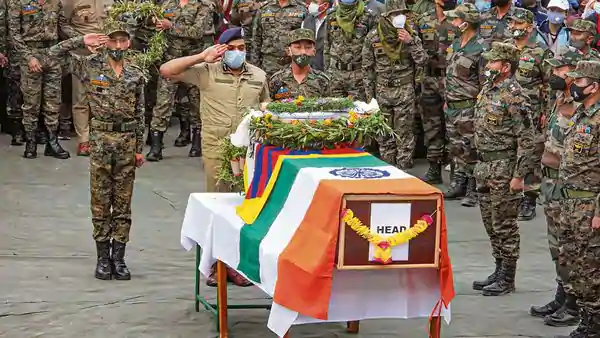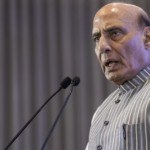
SOURCE: LIVE MINT
India on Monday appeared to send a strong signal to China that it has other options to bring pressure on Beijing with dialogue to reduce border tensions between the two countries still to make headway.
Joining those who paid homage to Nyima Tenzin, a soldier from the once-secret Special Frontier Force (SFF) unit of Tibetan soldiers operating under the command of the Indian Army, in Leh on Monday was the Bharatiya Janata Party’s general secretary Ram Madhav.
Members of the Tibetan community who live in exile in India, along with the Dalai Lama, as well as representatives of the Indian Army, were also present.
Tenzin was killed in action last week after he stepped on a vintage landmine in Ladakh, south of the scenic Pangong Tso, according to reports. It was in this region that the army, in a pre-emptive move on the intervening night of 29-30 August, took vantage positions atop five mountains. These features overlook key Chinese positions across the un-demarcated Line of Actual Control (LAC).
The army said it took the step as China was gathering its troops to lay claim to these features on the south bank of Pangong Tso. The south bank is always considered to be under Indian control, while the north bank, where Chinese troops are sitting at vantage positions at places that India considers its territory, was contentious, according to former Indian Army officers. By trying to take the features on the south bank, the Chinese are aiming to open a new front in the ongoing military face-off with India in Ladakh, they said.
Madhav shared pictures of himself attending Tenzin’s funeral in a Twitter post that was later deleted. His presence at the funeral was seen as a strong message to China, days after the fresh flare-up between the two countries.
Tensions between India and China have been running high since May when India first detected Chinese intrusions into Indian territory in violation of previously-agreed to pacts.
Five rounds of talks at the level of senior commanders, four at the level of diplomats, and many at the level of major general and brigadier level officers of the military have not yielded any result.
On Friday, India’s defence minister Rajnath Singh met his Chinese counterpart in Moscow on the sidelines of a regional conference. However, there was no breakthrough from the meeting.
Madhav’s presence at the funeral brings into the open the well-kept secret of the SFF unit and its links to the Indian Army. The SFF owes its allegiance to the Dalai Lama, the flag of Tibet and the flag of India, according to two people familiar with the matter. They are trained by the Indian Army in mountain warfare and receive pay from it.
The force recruits mostly from Tibetan refugees, thousands of whom have made India their home since fleeing Tibet with the Dalai Lama following a failed uprising in 1959. Some members of the SFF are also reportedly Indian citizens, though this could not be confirmed independently. The unit was raised in the 1960s and fought in the 1971 India-Pakistan war that saw the emergence of Bangladesh as an independent country. Their strength is estimated at 3,500- 5,000.
According to French-born Tibetologist Claude Arpi, who now lives in Tamil Nadu, it was in the closing week of India’s 1962 war with China that the Indian government in conjunction with the US Central Intelligence Agency (CIA) decided to recruit some Tibetans into the army.






